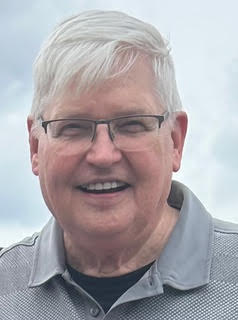Finding Balance After Stress, Trauma, and Addiction: Key Lessons from Dr. Steven Curtis on To Be and Do

On this enlightening episode of the To Be and Do Podcast, host Philip Amerson sits down with Dr. Steven Curtis, a clinical psychologist and neuroscientist, to dive deep into his new book, Rebalancing After Stress, Trauma and Addiction. The conversation isn’t just academic—it's full of practical wisdom and real-life stories that shed light on how our brains respond to chronic stress and addictive behaviors, and more importantly, what we can do to heal and thrive.
Dr. Curtis’s science-backed, compassionate approach made this episode a must-listen, especially for those grappling with overwhelming stress, trauma, addiction, or simply seeking more balance in life. Here are the three major takeaways from their conversation:
1. Addiction Isn’t Just About Substances – It’s About Calming the Brain
Early in the episode, Dr. Curtis shares a striking case: a client addicted not to a substance, but to listening to sermons—sometimes up to 60 hours in five days! He relates this behavior to more familiar addictions like food, romance novels, and even sports. At their core, these addictive behaviors are less about the activity and more about the urgent need to “calm down.” They offer a quick flood of endorphins—those feel-good chemicals—that temporarily relieve the discomfort caused by chronic anxiety and overactive stress responses. Dr. Curtis reminds us that when the brain experiences high baseline anxiety, it will seek any method, healthy or not, for relief.
2. Healing the Brain Requires ‘Chronic Calm’—Our Version of a Mental Cast
Dr. Curtis uses a powerful metaphor: just as a broken arm needs a cast and rest, our “emotion brain” (the emotional centers of the brain) need protection from ongoing stress to heal. This concept of “chronic calm” is revolutionary. It’s not a quick fix or a meditation session here and there, but a deliberate, daily commitment to calmness—using specific strategies to keep anxiety low, just as one would avoid activity that re-injures a healing bone. Dr. Curtis discusses how chronic stress enlarges the emotion brain, dulls rational thought, and creates a semi-permanent imbalance. With persistent calm, however, the emotional brain shrinks and the prefrontal cortex—the center for rational thinking—can “regrow,” restoring balance and improving decision-making and mental health.
3. Practical Steps and the Power of Community
The episode doesn’t just present the problem—it’s packed with solutions. In his book (especially Chapter Four), Dr. Curtis offers 14 actionable strategies for achieving and maintaining calm. These range from solo activities like mindful walks to group practices like meditation and singing. Importantly, he highlights the unique power of community—group meditation, music, and supportive gatherings. While chronic stress can make us withdraw, overcoming that impulse and engaging with others can accelerate healing, add joy, and improve both personal and community well-being.
Final Thoughts
Dr. Curtis and Philip Amerson together make a compelling argument for prioritizing mental balance in our lives. This episode is a compelling listen for anyone interested in neuroscience, mental health, or just living better in our high-stress world. Whether you’re facing trauma, burnout, or just looking for a more centered daily routine, the message is clear: chronic calm isn’t a luxury—it’s an essential strategy for long-term health and happiness.
For more insights and practical tools, check out Dr. Steven Curtis’s book, Rebalancing After Stress, Trauma and Addiction, and visit the To Be and Do Podcast website for resources and ways to connect.








